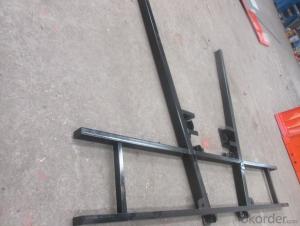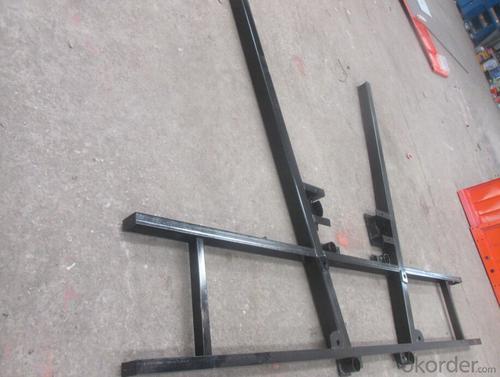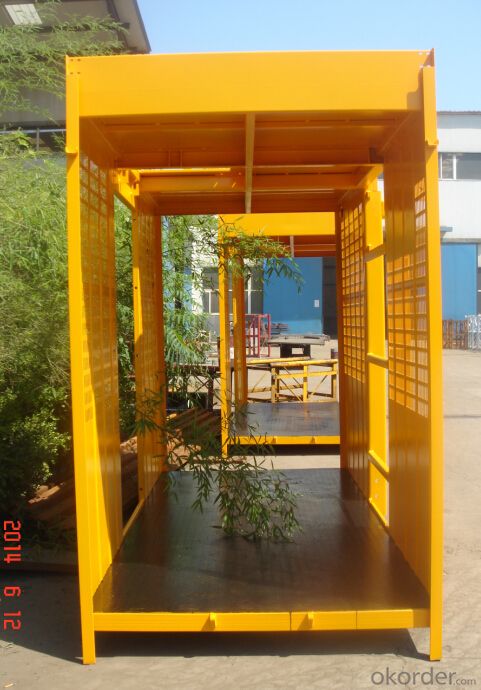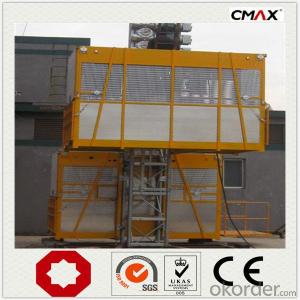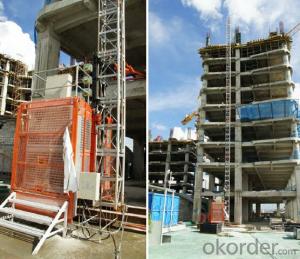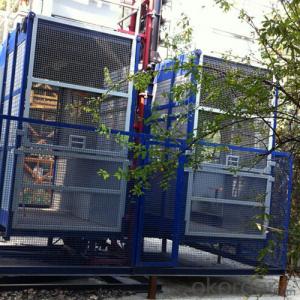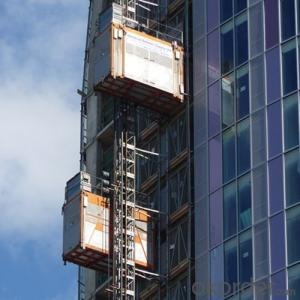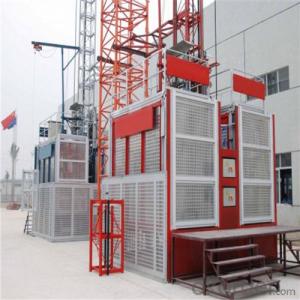SCD250/250 Middle Speed Construction Hoist for Building
- Loading Port:
- China main port
- Payment Terms:
- TT OR LC
- Min Order Qty:
- 1 set
- Supply Capability:
- 1000 set/month
OKorder Service Pledge
OKorder Financial Service
You Might Also Like
Specification
Introduction :
Construction lifter is mainly used to transport people or goods to multistoried building.Buwidely applies to such contruction sites as industrial and civil architecture,bridge,underground,large chimney,and ship industry,etc.
Construction lifter has such advantages as steady property, safety, reliability, flexible carrying, and good adaptability, etc., improves working efficiency, and can reduce working intensity.
Parameter :
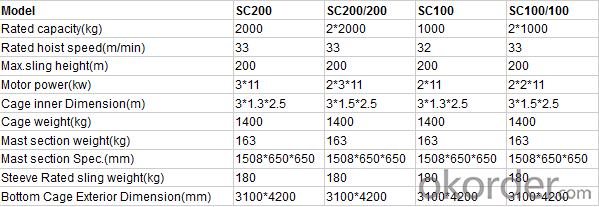
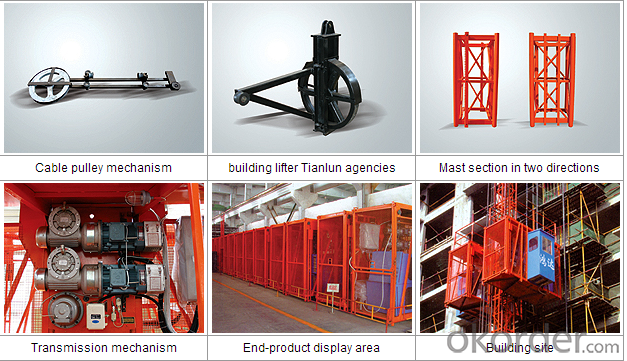
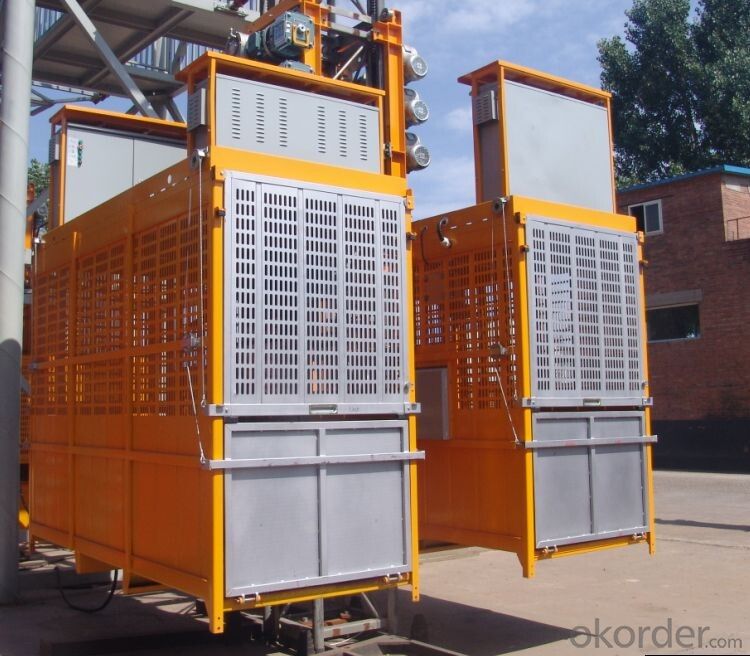
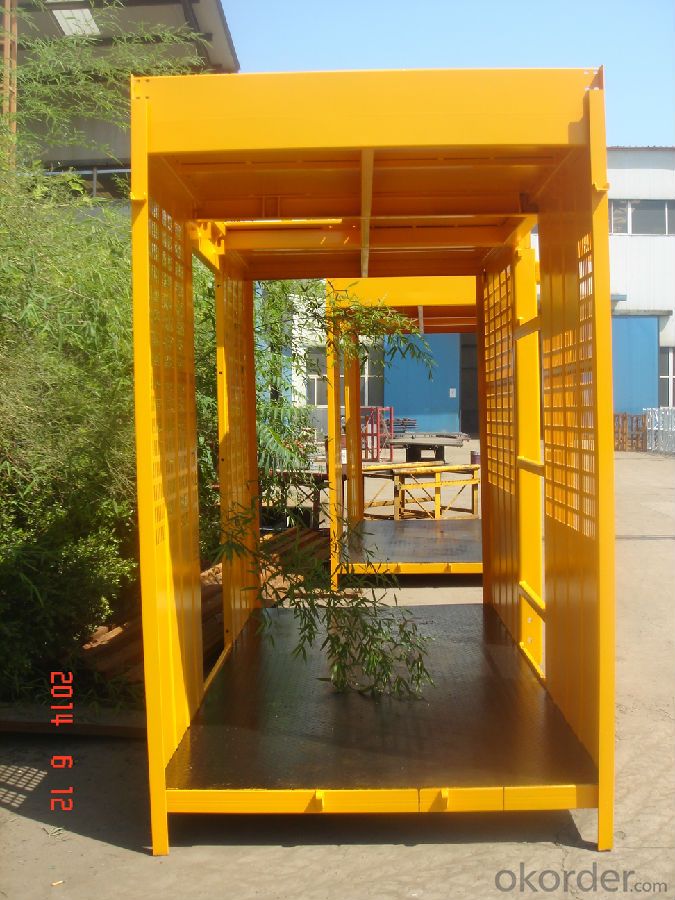
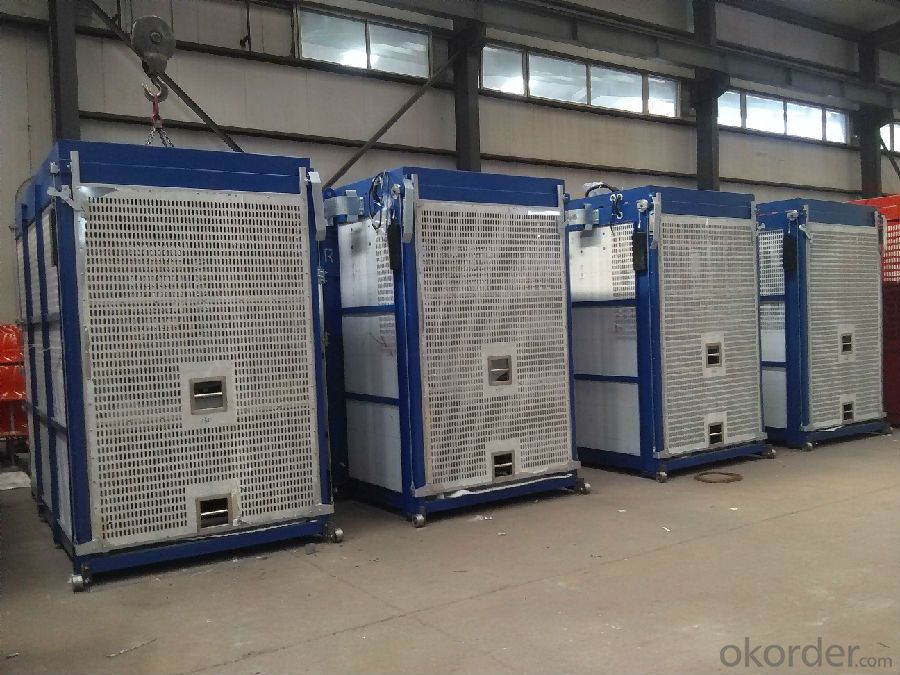
FAQ of Building Hoist
Q: What is the building hoist main purpose?
A: Building hoist equipped with double or single cabin to transport the materials and labors up and down. It's the ideal construction equipment for vertical transportation in the field of construction.
Q: What is the main structure of building hoist?
A: The P/M construction hoist mainly contains metal structure, driving system, electrical control system, cable guide & protection system, electrical top crane and safety device.
Q: What is the meaning of the building hoist’s code?
A: Take SC200/200 for example: “SC” stands for rack and pinion hoist, “200/200” stands for double cage and capacity is 2 tons per cage. “SC200” stands for single cage and capacity is 2 tons.
Q: What is the dimension of the cage?
A: Normally the cage dimension is 3X1.5X2.5M (L/W/H) for 2t type hoist. Details should be checked according to our quotation sheet. Also, the size can be customized according to the factual site condition. There are two doors (entrance & exit doors) for each cage, It can be produced as up & down sliding or ramping model for safety and convenience.
Brief Introduction about CNBM
1, CNBM is the biggest state-owned company which has had been awarded Qualified construction machinery manufactures and most of the big project are using our products.
2, CNBM possess key technical research department and could design & produce special machinery for international clients.
3, We have had passed ISO9001:2008,CE and etc.
4. The successful long-time construction machinery operation in the world testifies that the CMAX products’ performance is stable.
5. More than 10 overseas branch office provide immediate commercial convenience and after service.
6. We also has building hoist, suspended platform, formwork, etc. We also signed the strategic partnership with Tadano (China), XCMG, Zoomlion, Sany and other prestigious crane manufacturer, getting the competitive cost price from them, and using our overseas marketing channel to promote their brands. We can provider a series of equipment for your building company customer and supply a basket scheme for the final users.
7. We have built a cover 50,000 square meter logistic park in, Dubai UAE, will be a great guarantee of our business in middle east and nearby area.
- Q: This question asks for the method to determine the maximum weight that a building hoist can safely lift.
- <p>To calculate the lifting capacity of a building hoist, you need to consider several factors. First, identify the hoist's rated capacity, which is usually specified by the manufacturer. This is the maximum weight the hoist is designed to lift. Next, assess the condition of the hoist, including any wear and tear that might affect its performance. Check the hoist's mechanical components, such as cables, pulleys, and motors, to ensure they are in good working order. Additionally, consider the weight of the load you intend to lift and any additional factors like the frequency of lifts or the height of the lift. Always operate within the hoist's rated capacity and follow safety guidelines to prevent accidents.</p>
- Q: This question asks for a comparison between lifting equipment used in indoor settings versus those used outdoors, focusing on their differences.
- <p>Indoor lifting equipment is designed for controlled environments, often smaller and more precise, with features like electric chain hoists or jib cranes. They are typically quieter, require less maintenance, and are suitable for tasks like assembly, manufacturing, and warehouse operations. Outdoor lifting equipment, such as gantry cranes or mobile cranes, is built to withstand harsh weather conditions, has higher load capacities, and is often used for construction, shipping, and heavy industry. These are more robust, may require more maintenance, and are designed for larger, heavier loads over uneven terrain.</p>
- Q: The user is asking if it's possible to substitute a hydraulic lifting device for a building hoist in construction.
- <p>Yes, a hydraulic lifting device can be used as an alternative to a building hoist in certain scenarios. Hydraulic devices offer precise control and smooth operation, which can be advantageous for lifting heavy construction materials. However, it's important to consider the specific requirements of your project, such as the weight and size of the materials to be lifted, the height of the lift, and the frequency of use. Hydraulic systems are generally more expensive and require more maintenance than building hoists, but they can provide greater lifting capacity and versatility. Always ensure that any lifting device used complies with safety standards and regulations.</p>
- Q: This question asks for methods to protect lifting equipment from damage while it is being transported or stored.
- <p>To prevent damage to lifting equipment during transportation or storage, follow these guidelines: 1. Use protective covers or wraps to shield equipment from environmental elements. 2. Securely fasten equipment to prevent movement during transit. 3. Store equipment in a dry, clean area to avoid rust and dirt accumulation. 4. Regularly inspect equipment for signs of wear or damage before and after use. 5. Follow the manufacturer's guidelines for weight limits and proper handling. 6. Use padding or cushioning materials to protect equipment from impacts. 7. Ensure that all parts are properly lubricated to prevent rust and facilitate smooth operation. By adhering to these practices, you can significantly reduce the risk of damage to lifting equipment.</p>
- Q: Do the elevator need to be installed when the main project is in construction
- In the construction of the main body, the construction elevator should be installed. The general construction is about 15 meters. The construction elevator is commonly called the construction elevator, but the construction elevator includes a broader definition and the construction platform belongs to the construction elevator series. Simple construction elevator is by car, driving mechanism, standard section, attached to the wall, chassis, fence, electrical system and so on several parts, manned cargo construction machinery is a frequently used in construction, because of its unique enclosure structure make it take up both comfort and safety, construction elevator is usually used with tower crane on the construction site, the average load in 1-3 tons, running speed is 1 to 60 m/min. The construction elevator of our country is more and more mature, and gradually goes to the international. 3, building main body engineering means based on the above foundation, accept, for all the top load and construction project, maintaining structural integrity, stability and safety of bearing structure system.
- Q: What are the necessary maintenance tasks and considerations for ensuring the safe and efficient operation of a building hoist?
- <p>The maintenance requirements for a building hoist include regular inspections, lubrication, and checks on all mechanical components. It is crucial to inspect the hoist's cables, pulleys, and brackets for wear and tear. The drive mechanism and safety devices should be tested for proper functioning. Lubrication of moving parts is essential to reduce friction and prevent overheating. Additionally, the electrical system should be checked for any faults or damage. It's important to keep the hoist clean and free of debris to prevent any operational issues. Following the manufacturer's guidelines for maintenance intervals and procedures is vital to ensure the hoist remains safe and efficient.</p>
- Q: What are the essential maintenance tasks and checks required to keep a hydraulic building hoist in good working condition?
- <p>Regular maintenance of a hydraulic building hoist is crucial for safety and efficiency. Key requirements include inspecting and lubricating moving parts, checking for leaks in hydraulic lines and seals, ensuring the hoist's load limit is not exceeded, and verifying the operation of safety devices like limit switches and emergency stops. Additionally, the hydraulic fluid should be checked for contamination and changed as needed, typically every 1000 hours of operation or annually. The electrical system should be inspected for any damage or wear, and all controls should be tested for proper functionality. A thorough inspection by a qualified technician is recommended at least once a year to ensure all components are in compliance with safety standards.</p>
- Q: Is it feasible to utilize a building hoist for lifting heavy objects when the ground is not level?
- <p>A building hoist is generally designed for vertical lifting in a stable and level environment. Using it on uneven ground can be hazardous and is not recommended due to the risk of tipping or instability. For lifting heavy objects on uneven ground, it's advisable to use specialized equipment like mobile cranes or all-terrain forklifts that are designed to handle such conditions. Always consult the manufacturer's guidelines and safety regulations before using any lifting equipment.</p>
- Q: Is it permissible to use a building hoist for lifting people or animals?
- <p>No, building hoists are not designed for lifting people or animals. They are specifically engineered for the transportation of materials and construction equipment. Using a building hoist for this purpose is dangerous and can lead to accidents. It is essential to adhere to safety regulations and use appropriate equipment for lifting people or animals to ensure their safety and comply with legal standards.</p>
- Q: This question asks for the distinctions between two types of building hoists: manual and automatic.
- <p>Manual building hoists require human effort to operate, typically involving a pulley system and manual controls. They are generally less expensive but slower and more labor-intensive. Automatic building hoists, on the other hand, are motorized and can be programmed to lift and lower loads with minimal human intervention. They offer greater efficiency, speed, and safety, but come at a higher cost. Automatic hoists are also more suitable for high-rise construction due to their ability to handle heavier loads and operate over greater distances.</p>
Send your message to us
SCD250/250 Middle Speed Construction Hoist for Building
- Loading Port:
- China main port
- Payment Terms:
- TT OR LC
- Min Order Qty:
- 1 set
- Supply Capability:
- 1000 set/month
OKorder Service Pledge
OKorder Financial Service
Similar products
Hot products
Hot Searches
Related keywords
